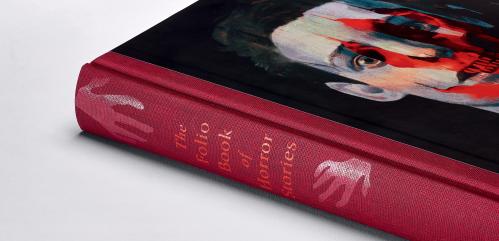This Folio Life: The dark truths within dystopian literature
The past decade has seen unsettlingly rapid technological, political, social and environmental change. And then Covid happened. No wonder, then, that dystopian fiction has rarely been more popular.
Cormac McCarthy’s Pulitzer prize-winning novel The Road was one of Folio’s most-requested titles – what draws us to such harrowing tales? Michael Chabon, in the afterword of the new Folio edition (hauntingly illustrated by Gerard DuBois), writes that such is the desolation of The Road, it deprives readers of even the ‘strange comfort that post-apocalyptic stories characteristically provide’.
All compelling dystopias cut close to the bone of our everyday lives, whether in the form of a pandemic more lethal than the one we’re all experiencing, a political regime more absolute, gender inequality more explicitly enshrined in law, or technology a few terabytes more powerful. ‘Dystopia is a version of our world that has realised our nightmares rather than our dreams,’ says Laura Lam, who teaches creative writing at Edinburgh Napier University and is herself the best-selling author of several speculative dystopias.
Dystopias can feel most powerful when it bleeds into the real world; when what we read on the page jolts us into the realisation that, yes, this isn’t simply a could be, it’s already an is – for someone, somewhere, if not for us (yet). Malorie Blackman’s Noughts & Crosses, in which Albion/England has been colonised by the powerful Aprican/African empire and its white population brutally oppressed, is one of the most celebrated examples. It is so grounded in reality that writer Benjamin Zephaniah, who introduces the Folio edition, states that even calling it dystopian ‘makes me uncomfortable’ because ‘when it comes to this book, so much of it has happened already. Maybe not in one place, at one time, but almost every piece of evil Malorie touches on in this book has been done.’
Margaret Atwood’s The Handmaid’s Tale likewise drew on real-world examples of gender oppression when it was first published in 1985, and continues to speak to our concerns today. Lam, whose own Goldilocks also explores a world in which women have been excluded from the workplace, points to how ‘during the current pandemic women have borne the most job losses or are pressured into taking unpaid leave to look after children’. Dystopias, she says, can be ‘an exaggeration of what has happened or is still happening’, and also express ‘our anxieties over things that are on the verge of entering our reality’.
Our appetite for dystopia in all its forms shows no sign of abating. And we surely need them as much as ever. ‘Dystopias help us realise the freedoms we do have, and all the people who fought for those rights,’ says Lam. ‘Dystopias remind us to cherish those, and to continue to fight tooth and nail to keep them.’








